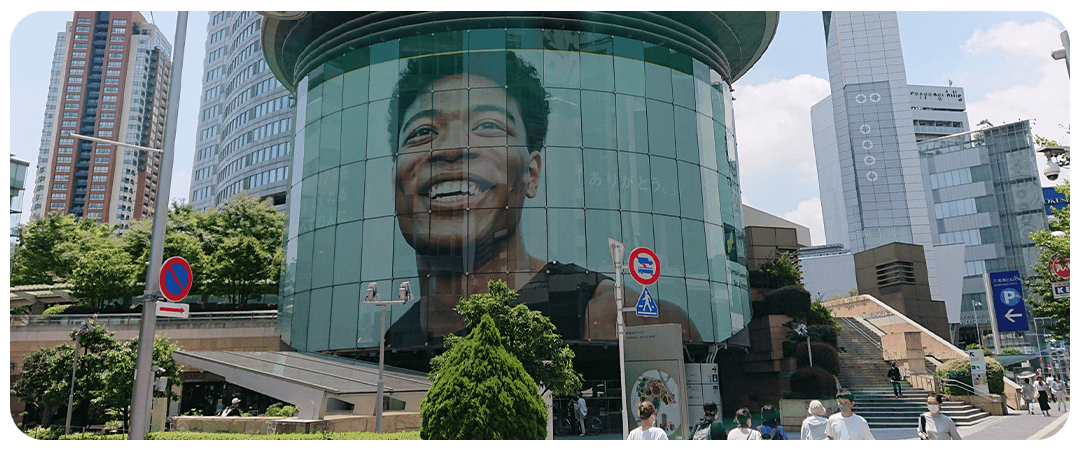
Japan presents a compelling, albeit complex, environment for Out-of-Home (OOH) advertising. Its densely populated urban centers, world-class public transportation systems, and technologically savvy populace create unique opportunities to engage high-value audiences. For marketers aiming to connect with business leaders, investors, and affluent global travelers, a strategic approach to OOH advertising Japan is essential. The market is characterized by iconic high-impact sites, extensive transit advertising Japan networks, and a growing adoption of Digital OOH Japan (DOOH), including programmatic capabilities. Understanding where and how to place your message is key to cutting through the visual noise and achieving campaign goals.
When considering OOH media planning Japan, it's crucial to look beyond just footfall; we need to identify environments frequented by our specific target demographic. Let's explore ten prime locations across Japan that offer exceptional potential.
1. Marunouchi District, Tokyo: As Tokyo's premier financial hub, Marunouchi is home to the headquarters of major corporations and financial institutions. OOH placements here, such as high-impact digital screens near Tokyo Station or sophisticated street furniture along Naka-dori Avenue, directly reach business leaders and decision-makers during their commute and work hours. Data from transit authorities typically highlights the immense passenger flow through Tokyo Station, a key gateway for this audience.
2. Ginza District, Tokyo: Synonymous with luxury retail and fine dining, Ginza attracts an affluent domestic and international audience. Large-format digital billboards and premium static displays on landmark buildings offer high visibility. Foot traffic data consistently shows Ginza as one of Tokyo's busiest pedestrian zones, particularly on weekends. While visually dense, carefully selected placements, perhaps leveraging programmatic DOOH Japan to target specific shopper demographics, can be highly effective.
3. Shibuya Crossing Area, Tokyo: Famous worldwide, the Shibuya Scramble Crossing offers unparalleled exposure, though it caters to a broader youth demographic alongside tourists and commuters. For targeting specific segments like affluent travelers or tech-savvy investors, consider the digital screens overlooking the crossing. While billboard advertising Tokyo, especially here, commands premium rates, its iconic status offers immense reach.
4. Shinjuku Station Area, Tokyo: As the world's busiest railway station, Shinjuku is a massive transit hub serving millions daily, including countless business commuters. The station itself and the surrounding commercial district offer extensive transit advertising in Japan opportunities – from platform screens and pillar wraps to large external digital displays. Given the high traffic, understanding passenger flow data is crucial for optimizing placement. Programmatic DOOH can target commuters based on specific train lines or times of day.
5. Roppongi Hills, Tokyo: This integrated urban development combines offices, luxury residences, retail, and cultural venues, attracting a sophisticated mix of business professionals, expatriates, and affluent residents. Digital screens within the complex and strategically placed static OOH offer targeted exposure. The environment is curated, allowing for premium brand messaging with less clutter than more chaotic public spaces.
6. Umeda District, Osaka: Osaka's primary business, shopping, and entertainment hub, centered around Osaka and Umeda Stations. This area sees massive daily commuter traffic, including many business professionals. Large digital screens, extensive in-station advertising (Kōtsū kōkoku Nihon), and street-level OOH provide diverse options. Analyzing transit data helps pinpoint high-dwell-time areas within the station complex for effective engagement.
7. Namba Area, Osaka: Known for its vibrant entertainment and shopping, Namba attracts tourists and locals, including affluent consumers. Iconic placements like large billboards around Dotonbori and digital screens near Namba Station offer high impact. While visually stimulating, there are opportunities for standout creative or placements in adjacent, slightly less saturated zones frequented by the target demographic.
8. Sakae District, Nagoya: Nagoya's downtown commercial and entertainment center, Sakae, is a key location for reaching business professionals and affluent shoppers in the Chubu region. OOH options include digital billboards, street furniture, and transit advertising within the Sakae subway station. Demographic data for the area often points to a high concentration of professionals working in nearby office towers.
9. Tenjin District, Fukuoka: As the commercial heart of Kyushu, Fukuoka's Tenjin district boasts department stores, offices, and underground shopping arcades. It's a major transit point with significant foot traffic. Digital screens and transit advertising within the Tenjin subway and Nishitetsu Fukuoka (Tenjin) stations are effective for reaching regional business leaders and affluent residents. Understanding local Japan OOH market trends can reveal specific opportunities in this growing city.
10. Key Bullet Train Stations: Major Shinkansen stations like Tokyo, Shinagawa, Shin-Osaka, Nagoya, and Hakata serve as critical nodes for business travel across Japan. Digital displays and static OOH within these stations capture the attention of business leaders and affluent travelers during transit dwell times. Train advertising Japan on the bullet train lines themselves, though distinct from station OOH, complements this strategy. Programmatic options can allow targeting based on travel patterns or destinations.
Strategic Considerations for OOH in Japan
Successfully leveraging outdoor advertising Japan requires more than just picking locations. Consider the high density of advertising in major hubs – differentiation is key. Explore unique formats or placements that offer higher dwell time or target specific micro-locations within these larger areas. Embrace Digital OOH Japan, utilizing its flexibility for dynamic content and programmatic targeting based on time, audience data, or even environmental triggers.
By focusing on these prime locations and employing smart OOH media planning Japan strategies, marketers can effectively engage Japan's influential business leaders, investors, and affluent travelers, driving brand awareness and consideration in this vital market.


